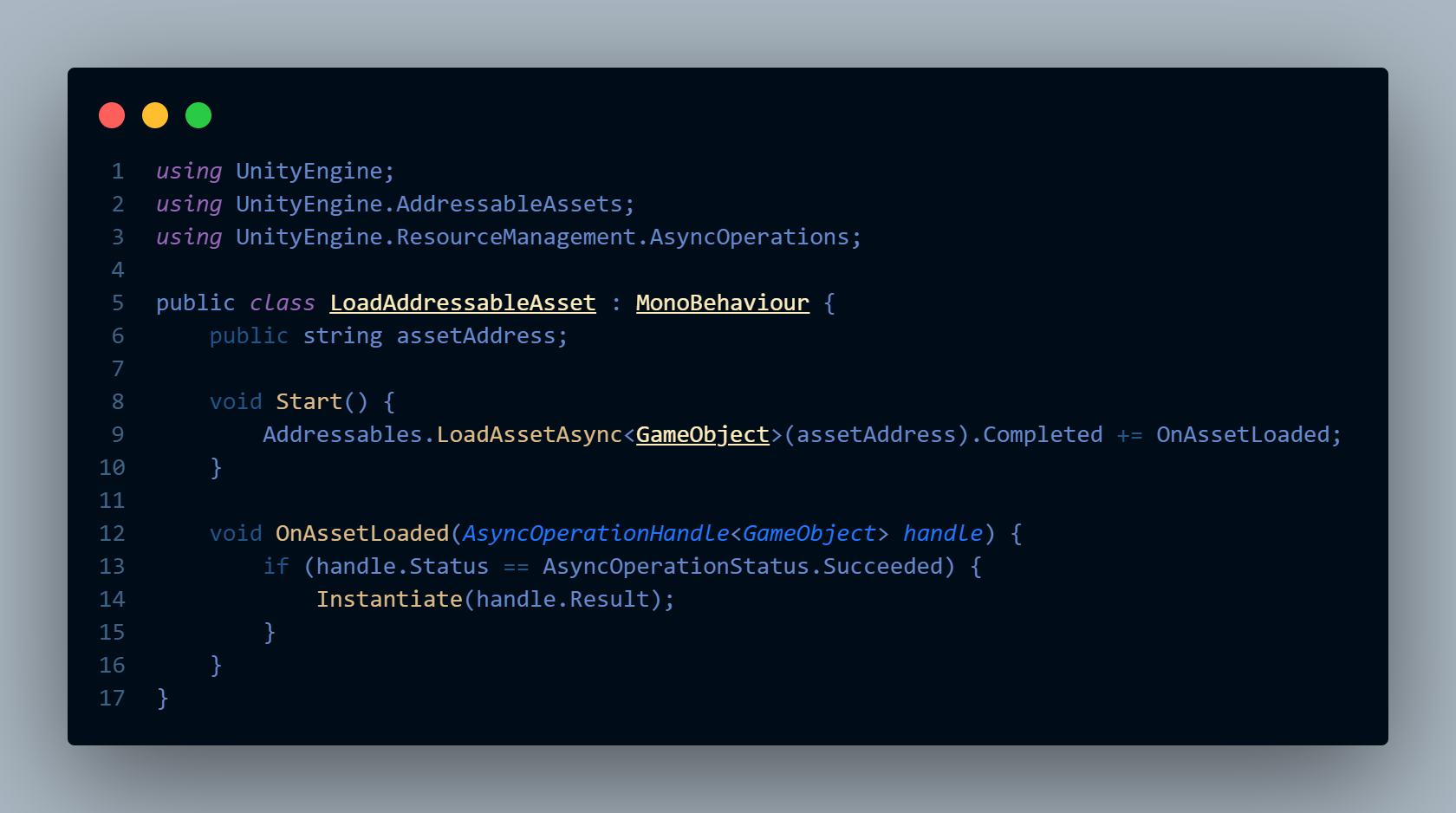Mastering Unity Addressables: Optimizing Asset Management in Your Game
 Kavindu Praneeth
Kavindu Praneeth
Introduction
As game developers, we often face challenges related to memory management, asset loading efficiency, and build size optimization. Unity’s Addressable Asset System provides a robust solution to dynamically load and manage game assets, improving both performance and workflow.
This article will guide you through the importance of Addressables, how to set them up, implement them in your projects, and best practices for optimizing performance.
What Are Unity Addressables?
Unity Addressables is a system that allows developers to assign unique addresses to assets and load them dynamically at runtime. Unlike traditional asset references that increase memory usage and build size, Addressables help streamline asset management by enabling on-demand loading and unloading.
Key Features:
Asynchronous Loading: Loads assets in the background without freezing the game.
Memory Optimization: Assets are loaded only when needed and unloaded when no longer required.
Remote Hosting: Assets can be stored on a server or CDN, reducing the app size.
Better Project Organization: Simplifies asset management for large-scale projects.
Why Use Unity Addressables?
Traditional asset loading methods rely on direct references, which can lead to issues such as:
Increased build size due to unused assets.
High memory consumption, causing performance bottlenecks.
Long loading times, affecting player experience.
Addressables solve these problems by giving developers fine control over asset loading, thereby improving efficiency and scalability.
Setting Up Addressables in Unity
Step 1: Enable Addressables in Your Project
Open Unity Editor and navigate to Window > Asset Management > Addressables > Groups
some time you can download through package manager through this.
Click Create Addressables Settings if it’s your first time using Addressables.
Unity will create an AddressableAssetsData folder in your project.
Step 2: Mark Assets as Addressable
Select an asset in the Project Window.
In the Inspector Panel, check the Addressable option.
Assign a unique address (e.g., PlayerModel, Environment/Tree1).
Step 3: Organizing Addressable Groups
Unity creates a Default Local Group, where assets are stored inside the game build.
You can create Remote Groups to host assets externally.
Use Labels to categorize assets (e.g., Characters, Weapons, UI Elements).
Loading Addressable Assets in Code
Once assets are marked as Addressable, they can be loaded dynamically in your scripts.
Loading a Prefab at Runtime

Unloading Assets to Free Memory
Addressables.Release(handle);
Advanced Features of Addressables
1. Remote Asset Hosting
Addressables allow you to host assets on a cloud server. This is particularly useful for:
Live updates without requiring players to download a new build.
Reducing app size by storing large assets externally.
Multi-platform asset management (e.g., mobile, PC, console).
2. Scene Management with Addressables
Loading entire game scenes dynamically:
Addressables.LoadSceneAsync("GameLevel1");
3. Memory Management Best Practices
Release assets after use to avoid memory leaks.
Use AssetReference instead of raw string references.
Monitor memory usage with Unity’s Profiler Tool.
Best Practices for Using Addressables
1.Use Labels & Groups: Helps categorize assets and load them efficiently.
2.Load Asynchronously: Prevents game stuttering during asset loading.
3.Optimize Build Size: Move large assets to remote hosting.
4.Test on Different Devices: Ensure optimal performance across platforms.
Conclusion
Unity Addressables revolutionize asset management, making it easier to handle complex game structures while optimizing performance. Whether you're developing a mobile game, VR experience, or large-scale multiplayer project, Addressables can significantly enhance your workflow.
Are you using Addressables in your Unity projects? Share your experience and thoughts in the comments!
Subscribe to my newsletter
Read articles from Kavindu Praneeth directly inside your inbox. Subscribe to the newsletter, and don't miss out.
Written by
